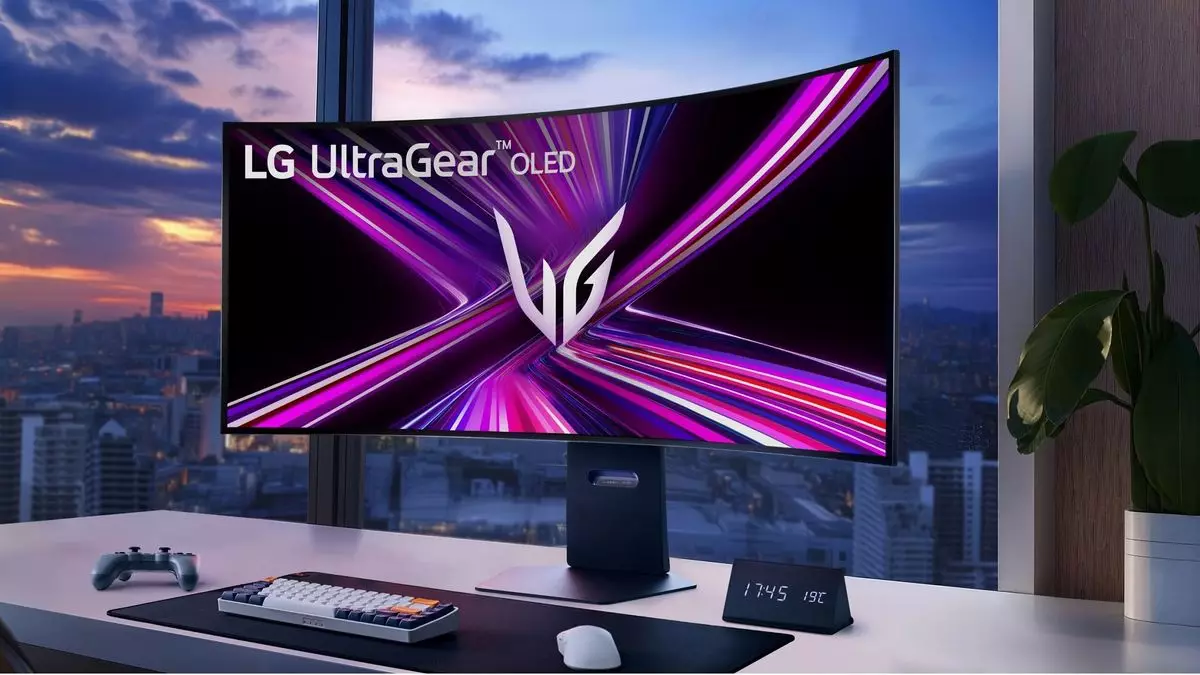The rapid evolution of technology has ushered in countless innovations, but few have captured the enthusiasm of gamers quite like the emergence of OLED (Organic Light Emitting Diode) technology in gaming monitors. According to recent insights from LG, an impressive 22% of the PC gaming monitor market now consists of OLED panels, a figure that highlights the momentum of this technology within a mere two years of LG’s foray into this marketplace with its first OLED monitor. This surge in adoption is particularly remarkable when juxtaposed with the 18% share of OLED panels found in the television sector, indicating a faster trajectory in the PC gaming realm.
The journey of OLED technology in gaming began with the Alienware 34 AW3423DW, released nearly three years ago and powered by Samsung’s innovative QD-OLED technology. Following that initial landmark, LG introduced its own offerings, signifying a burgeoning array of options for gamers who prioritize color accuracy, contrast, and response time. However, it’s intriguing to analyze why the shift to OLED monitors has outpaced that of televisions despite the generally higher cost of these gaming-centric displays.
The entry price for an OLED gaming monitor starts at around $600 for a 27-inch 1440p model from major brands, while many others exceed $800, often averaging around $1,000. The question arises: how can such niche, high-priced products amass a significant proportion of the market share, especially in a landscape dominated by more affordable LCD alternatives?
Understanding the Appeal of OLED
To fathom the rising popularity of OLED among PC gamers, it is essential to consider the core advantages of OLED technology. The stark contrast ratios and vibrant color performance offered by OLED panels create an immersive gaming experience that simply cannot be matched by traditional LCD displays. Gamers are invariably drawn to these attributes, especially in high-stakes scenarios filled with competitive edge and artistic graphics.
Moreover, as gaming continues to evolve into a visual extravaganza, where every pixel counts, the benefits of OLED technology become even more alluring. Whether it’s the dark depths of a shadowy dungeon or the brilliant sunlight of an expansive outdoor landscape, the depth of color and detail that OLED technology brings to the table enhances the gaming experience in ways that are both noticeable and impactful.
The Pricing Paradox
Despite these compelling advantages, it’s perplexing that OLED monitors have maintained high price tags. When considering that a 27-inch 1440p OLED monitor can cost the same as or more than a sizable 42-inch 4K OLED television, the value proposition becomes questionable. The difference in consumer expectations and market dynamics between gaming monitors and televisions lies at the heart of this pricing conundrum.
Indeed, for the casual viewer, purchasing a budget LCD monitor priced at approximately $200 or a larger ultrawide model for roughly $250 is an easy choice when compared to the investment required for OLED technology. While prices have started to decline slowly, a significant reduction would be essential to facilitate broader acceptance and entice gamers hesitant to compromise their wallet for visual quality. If OLED monitors could reach the esteemed threshold of $500 for a 32-inch 4K model, it would revolutionize market dynamics.
Recent announcements from LG and Samsung pertaining to advancements in OLED technology have fueled hope among enthusiasts. With claims of new OLED panels achieving full-screen brightness levels as high as 400 nits, the barriers that have traditionally hindered OLED’s adoption seem poised to diminish. Increased brightness levels would address lingering concerns about visibility in brightly lit environments and enhance the overall user experience.
Consumer anticipation regarding forthcoming models, particularly those offering enhanced brightness at competitive prices, certainly indicates a promising trend. Forecasting developments suggests that within a few short years, a sub-$500 OLED monitor could materialize—a landmark achievement for the gaming community.
However, it’s essential to remain cautious, as the allure of premium products continues to drive pricing strategies. For example, LG’s new 5K2K Ultragear 45GX950A at $2,000 signifies that while advancements are on the horizon, the push for high-end specifications may still yield a price premium, at least in the short run.
The rise of OLED technology in the gaming monitor sector is a multifaceted phenomenon characterized by rapid market penetration, unparalleled visual fidelity, and an ongoing battle with pricing and accessibility. As demand escalates and technological advancements continue, the future appears bright for OLED in PC gaming—a shift that could redefine the landscape of competitive gaming.

